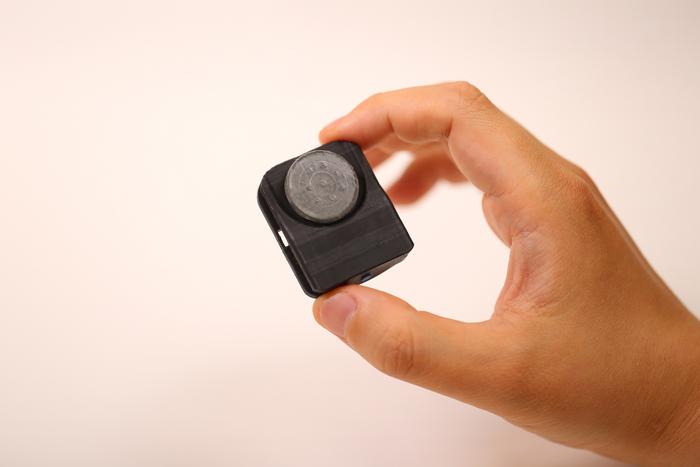
Northwestern University researchers have made significant strides in the field of wearable technology by developing a groundbreaking device capable of monitoring gases interacting with the skin without making any physical contact. This innovative approach paves the way for advanced skin health assessment, which holds immense promise for clinical applications, particularly in wound care and general health monitoring. The ability to measure gases released from and absorbed by the skin is a pivotal step in understanding skin health and aiding patients with various conditions without the limitations presented by traditional monitoring techniques.
The device features an array of specialized sensors that detect minute changes in skin gas emissions, including carbon dioxide, water vapor, and volatile organic compounds (VOCs). By continuously analyzing these constituents, the wearer’s skin health can be thoroughly assessed, which could revolutionize how skin conditions are diagnosed and treated. A key aspect of this device’s design is its no-contact methodology, allowing it to float above the skin’s surface without causing disruption to fragile skin, making it especially beneficial for vulnerable populations like infants and the elderly.
At its core, this wearable gadget operates through a collection chamber that captures gas emissions while employing a combination of programmable valves and sophisticated sensors. As gases naturally enter and exit the chamber surrounding the skin, simultaneous readings are taken to establish a baseline. Importantly, when needed, the chamber can seal off to capture emissions, creating a dynamic system that monitors real-time gas concentrations. This functionality is crucial in discerning variations caused not only by the skin’s interactions but also by environmental factors. Such innovation opens avenues for understanding conditions that could lead to infections or skin disorders and dramatically alters clinical methodologies.
In practical settings, the device can provide critical insights during wound management and help detect potential infections by monitoring indicators such as increased CO2 and VOC emissions. Enabling real-time analysis ensures swift intervention, reducing the likelihood of complications, particularly in diabetic patients who are at heightened risk for wounds that can become severely infected. The technology can thus empower health professionals, enabling smarter clinical decisions informed by data on the continuous status of a patient’s skin condition.
By examining the integrity of the skin barrier, healthcare professionals can gain a better understanding of potential vulnerabilities to irritants and bacteria. Traditional measurements of skin water loss are cumbersome and impractical in everyday settings, typically requiring specialized equipment found only in clinical environments. The advent of this compact wearable device facilitates unprecedented monitoring capabilities, permitting patients greater control over their health and allowing professionals to evaluate skin health remotely. This revolutionary approach not only enhances patient empowerment but also streamlines clinical workflows and resource utilization.
Researchers envision further enhancements for this device, including sensors that can detect pH levels and improved chemical specificity for identifying underlying health issues. Such attributes could extend its applications beyond dermatology to include broader health monitoring. Through continuous advancements and enhancements, the team aims to leverage its expertise to develop a more robust suite of tools that can aid in diagnosing maladies potentially obscured in traditional assessments.
The impact of this technology is particularly relevant in today’s healthcare landscape, where the need for non-invasive monitoring systems is paramount to ensure patient safety while reducing risks associated with invasive procedures. Empowering individuals to remotely monitor their skin health opens doors to personalized medicine powered by real-time data. Consequently, healthcare professionals can extend their reach and provide tailored interventions more dynamically, reflecting a paradigm shift in patient management.
Moreover, the implications reach beyond wound care and general skin health; the device could play an essential role in understanding how lifestyle products like lotions and insect repellents influence skin chemistry. As researchers explore the relationship between skin emissions and environmental interactions, these findings could guide the development of more effective treatments and preventative measures tailored to individual needs. Weighting the balance between science and daily practicality, this technology holds the potential to enhance the quality of life for countless individuals grappling with skin health issues.
As the research team at Northwestern University prepares to unveil this promising wearable device in an upcoming publication, anticipation surrounds its implications for the future of dermatological health and wearable technology. The endeavor embodies a broader vision of leveraging technological innovations to cater to specific healthcare needs while providing real-world solutions with tangible benefits to patients. The continuous evolution of this technology exemplifies a commitment to advancing medical science, addressing the urgent demands of modern healthcare, and enhancing the overall quality of care available to patients.
In summary, the groundbreaking device developed by Northwestern University researchers exemplifies a monumental leap in wearable medical technology. Its unique features facilitate unprecedented insights into skin health and offer transformative capabilities in clinical practice. By effectively measuring and interpreting gaseous emissions from the skin, the device empowers healthcare professionals and patients alike to understand and manage skin-related health challenges in novel ways, paving the path toward a future where real-time, personalized health monitoring becomes the norm.
Subject of Research: People
Article Title: A Non-contact Wearable Device for Monitoring Epidermal Molecular Flux
News Publication Date: 9-Apr-2025
Web References: Nature DOI
References: Not available
Image Credits: John A. Rogers/Northwestern University
Keywords
Wearable devices, Wound healing, Gases, Environmental health, Sensors, Water vapor.
Tags: advanced skin care technologycarbon dioxide monitoring for skinclinical applications of wearable devicesgas emissions analysis for skin healthhealth monitoring for vulnerable populationsinnovative health assessment toolsnon-contact skin monitoring deviceNorthwestern University research in wearable devicessensors for skin gas measurementvolatile organic compounds in skin healthwearable technology for skin healthwound care technology advancements





